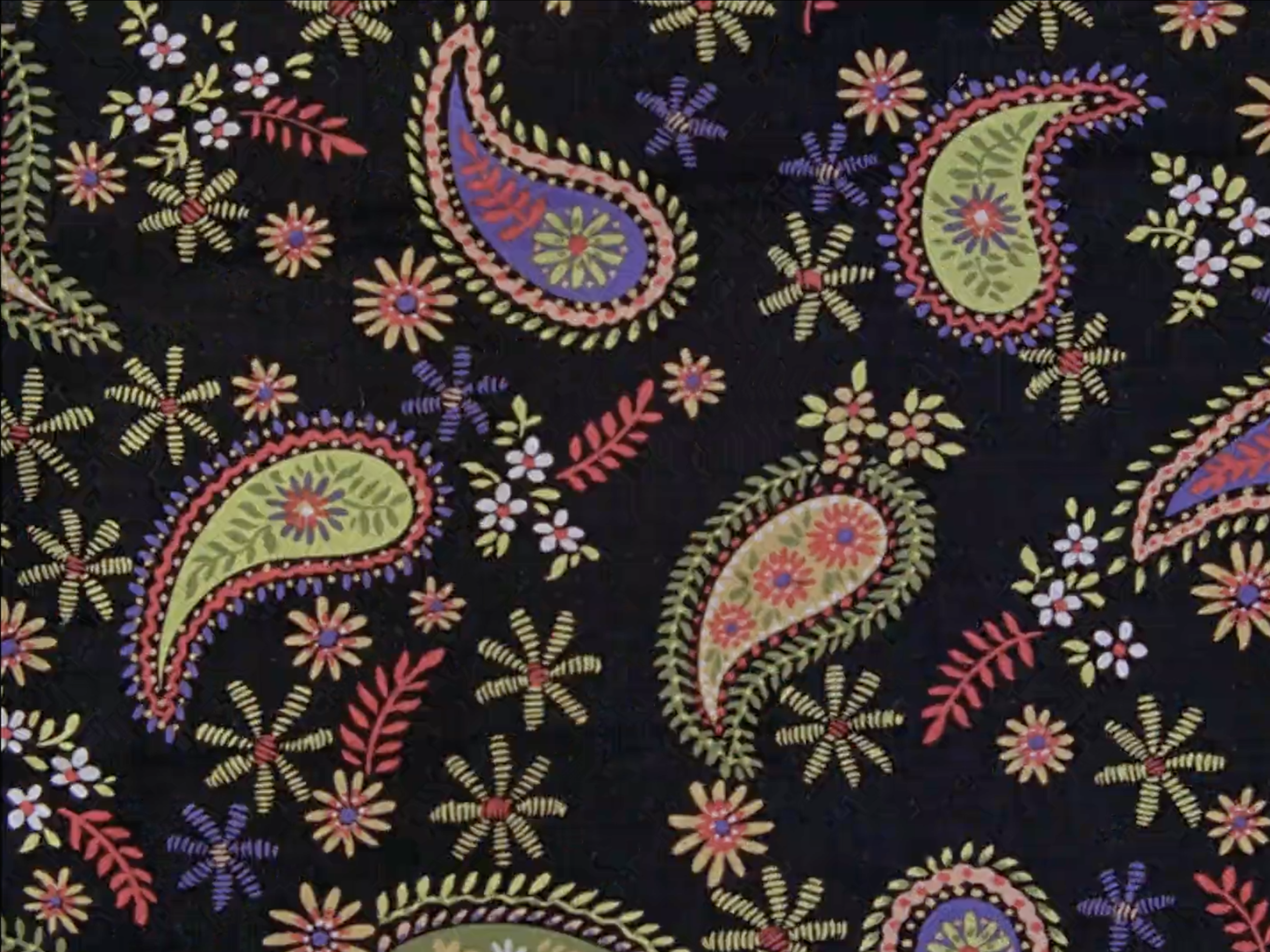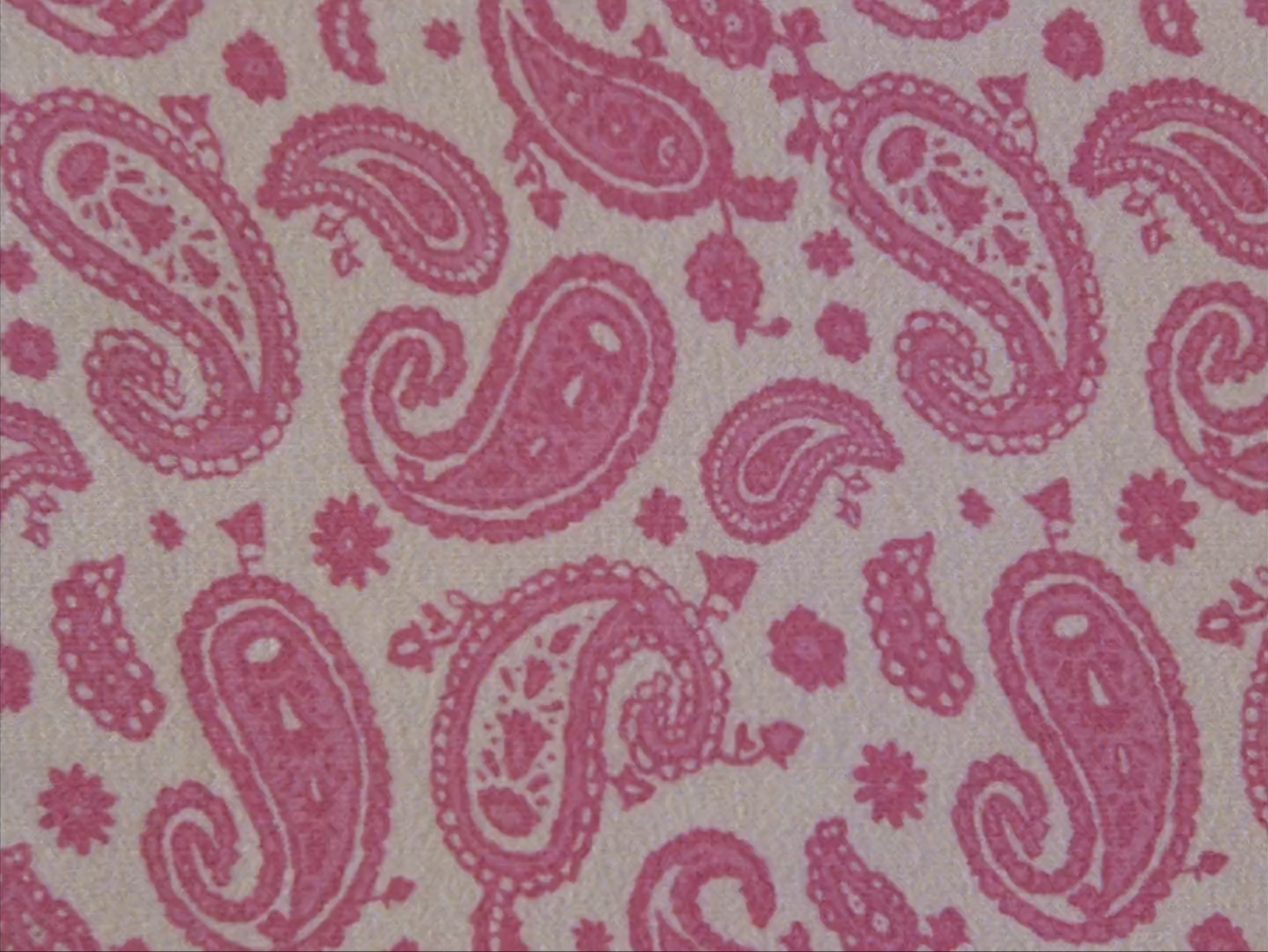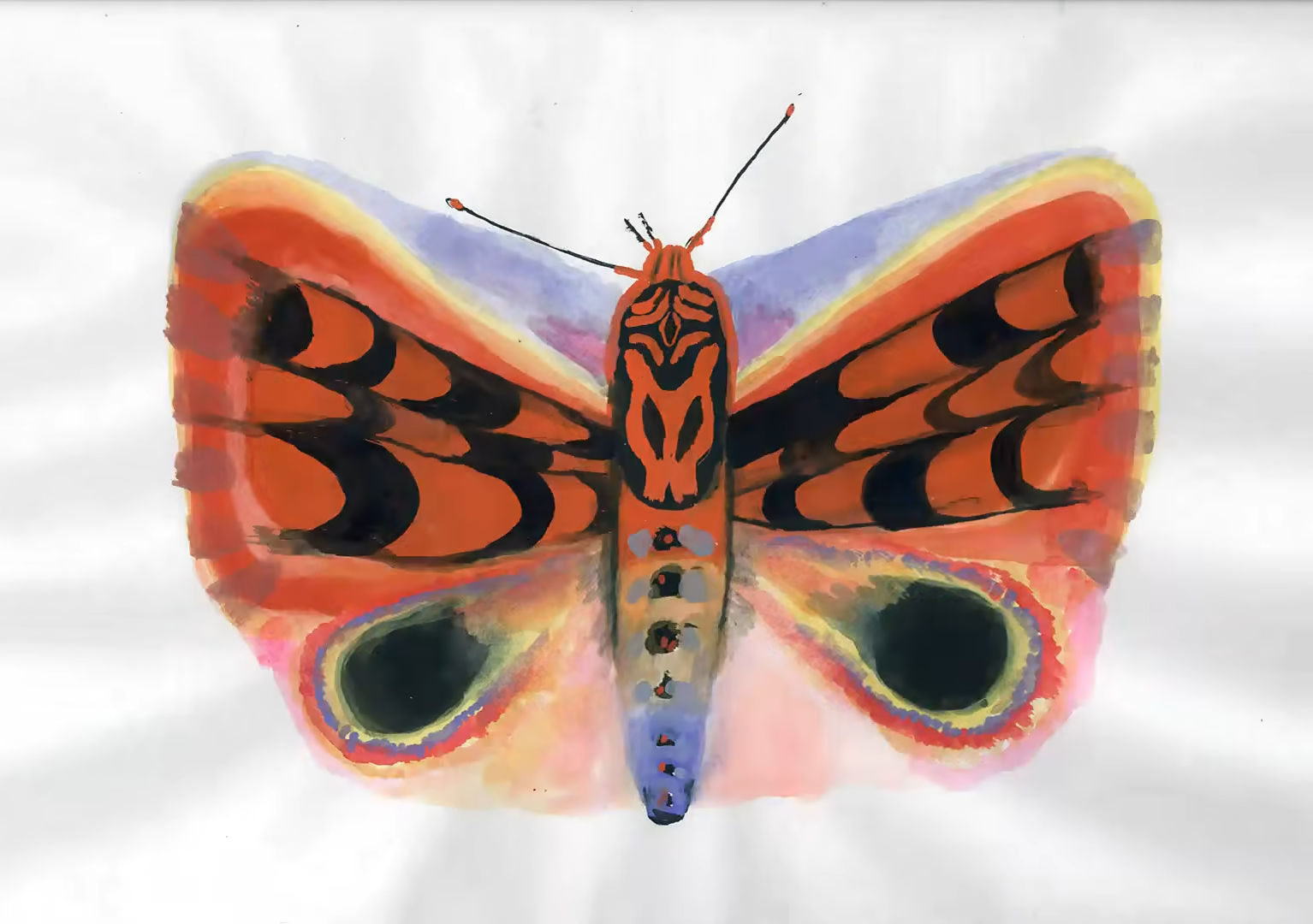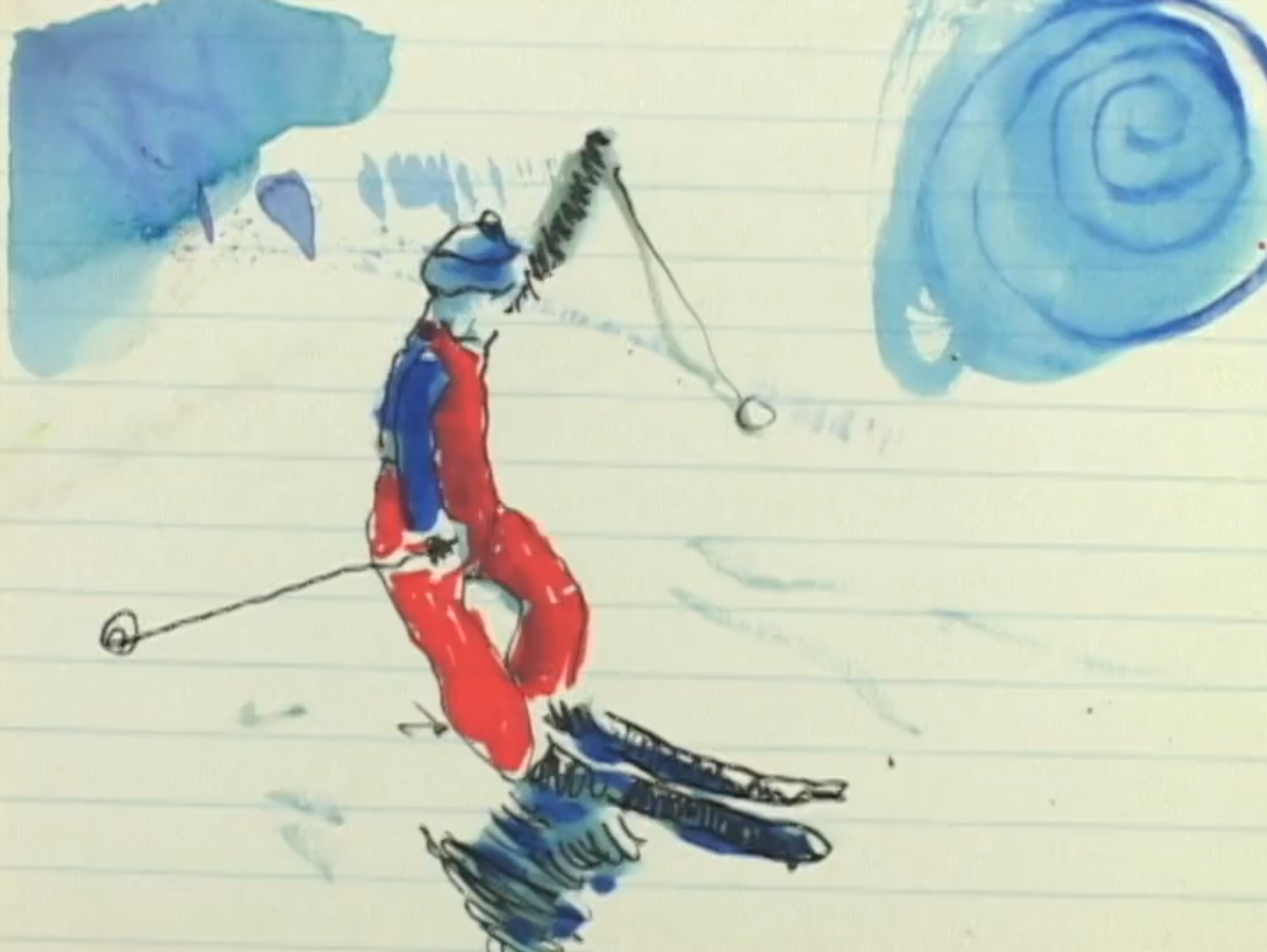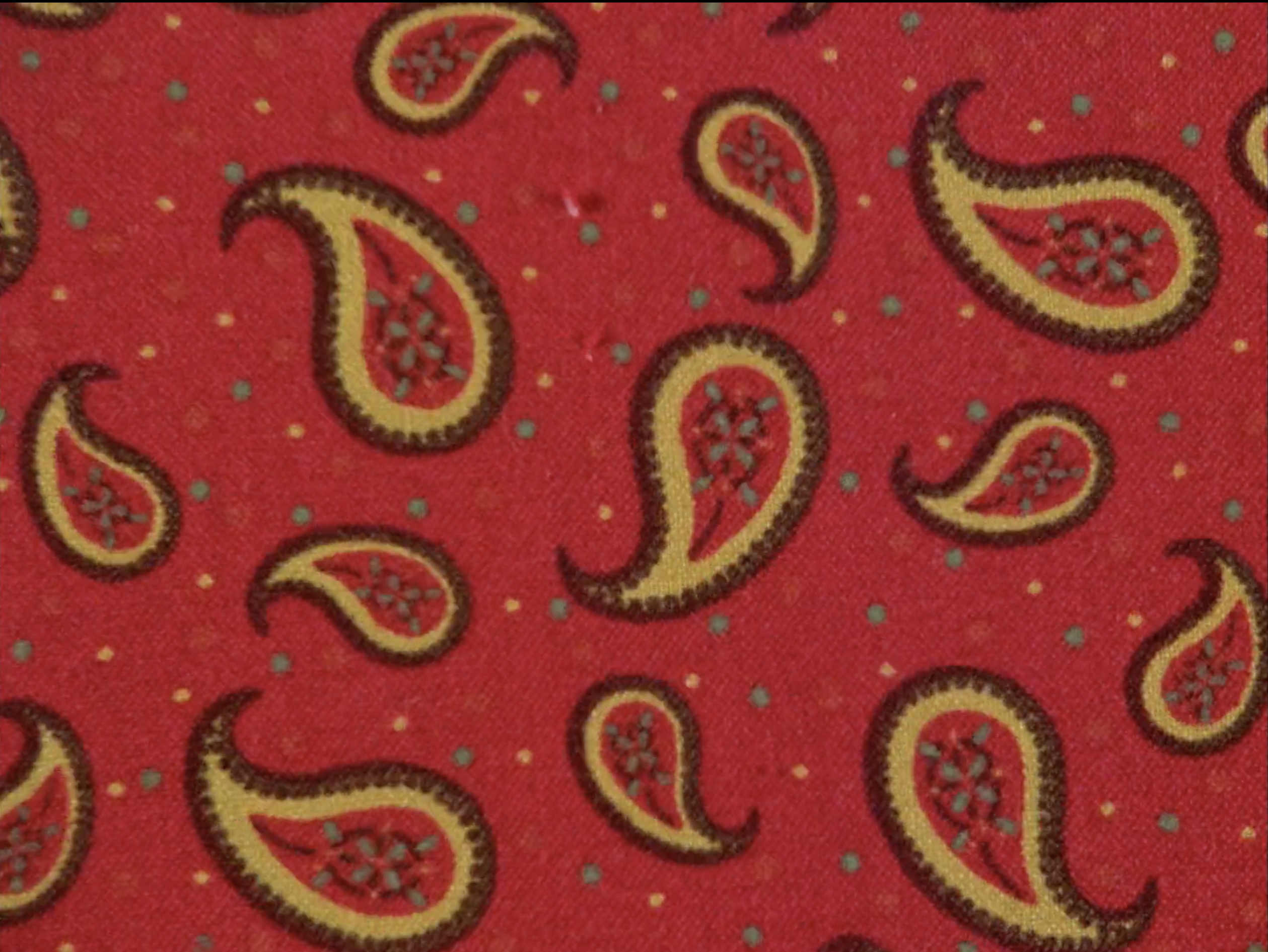
Notes on the film
Persian Pickles utilises a rapid replacement animation method to create a strobing effect with different samples of paisley-patterned fabric. Working with found material across numerous iterations, Mack focuses on a single ornamental motif to consider how the recurring fabric pattern interacts with the viewer’s perception. By changing the angle of the patterned fabric, the small paisley designs appear as though they are swimming.
The “pickle” of the title references both the idea of preservation (in this case discarded fabrics) and the Scottish vernacular for “a small amount”. The use of Scots is a nod to the town of Paisley, a global centre for textile manufacturing in the 19th century, lending its name to its most famous product. Yet the film’s textile sources trace this decorative motif even further, from its origins in Persian weavings through to appearances in Irish quilting and into 1960s Carnaby Street psychedelia. While the ornament maintains recognizable continuity across hundreds of iterations, its stylized details and colours change in accordance with each historical context. Their flickering collective attests to the migration of textile patterns across geographic and historical borders, as the pattern’s shape remains, but its context and reception change.
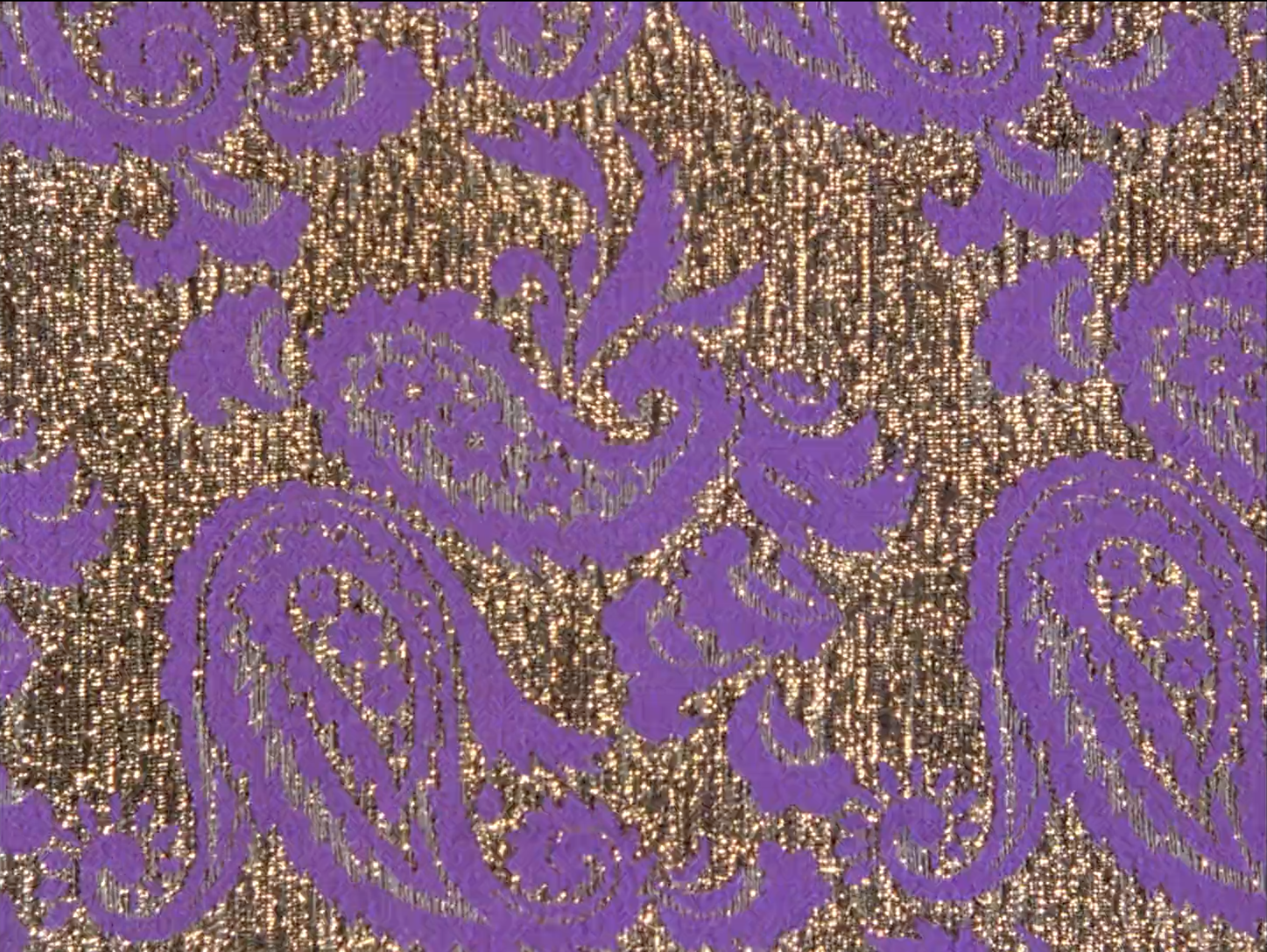
the texture of the fabric defines the film surface, while the pattern shapes its optical soundtrack.
Fixating on textile waste and contemplating its cultural origins, Persian Pickles also examines decorative arts and their relationship to cycles of industry and evolving modes of production. The pattern itself becomes part of the film, with the optical soundtrack translating the pattern into a sound that suggests static cling and renders the film and its subject as one.
